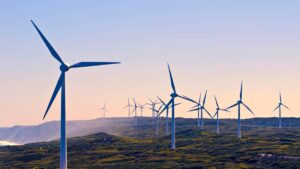Green Energy: Are a fifth of all Aussie carbon credits junk?

Pic: Vertigo3d / E+ via Getty Images
Are all carbon credits equal?
No, according to new research from the Australian Conservation Foundation and Australia Institute.
They say a fifth of ACCUs in the $4.5 billion Emissions Reduction Fund are effectively ‘junk credits’, comprised of units issued for projects under the avoided deforestation method of carbon abatement.
Only according to their analysis, much of that forest was never going to be mowed down anyway, meaning no actual carbon abatement occurred.
The analysis was released the same week the Morrison Government announced plans to launch a PR campaign advertising its “strong track record and plans to reduce emissions”.
The ERF is one of its flagship policies — a voluntary market industry which the Government can buy into to offset emissions from their activities.
The ACF and Australia Institute says some $310 million of taxpayer’s money will be used to purchase Australian Carbon Credit Units generated from the ‘avoided deforestation method’.
“The lack of integrity relating to Australia’s carbon abatement methods calls into question the overall value of the ERF and its success as a mechanism to help Australia meets its climate targets,” the Australia Institute’s climate & energy program director Richie Merzian said.
“There is legislation in place that requires landholders not be paid to avoid emissions that were never going to be generated. The Australian Government has failed to ensure that requirement has been met.”
“Just as it would be a poor use of taxpayer funds to pay non-smokers to stop smoking, this method of accounting sees taxpayer dollars paying to retain vegetation that was never going to be cleared. Our research shows that many of Australia’s carbon credits could be little more than hot air.”
A question of maths
The maths and rules around carbon credits can be confusing.
One of the issues, the authors say, is that land clearing is assumed by the crediting method to take place over a 15 year period based on permit approvals.
In actuality, clearing rates would need to increase by between 751% and 12,804% for that to occur.
Market and government bodies, including the Carbon Markets Institute and Clean Energy Regulator have defended the calculations and questioned the analysis from the ACF and Australia Institute, saying the credits did reduce deforestation.
“The ERF has a well-deserved reputation of world’s best practice integrity, which is reflected in the premium price paid for ACCUs in the carbon market compared to other units of lesser quality,” a CER spokesperson told the ABC.
Demand from industry has driven prices for ACCUs to record levels this year, with Reputex Energy last week saying prices were up 57% for the year to $26/t.
Related Topics
UNLOCK INSIGHTS
Discover the untold stories of emerging ASX stocks.
Daily news and expert analysis, it's free to subscribe.
By proceeding, you confirm you understand that we handle personal information in accordance with our Privacy Policy.








